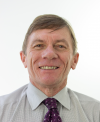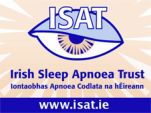Oral appliance therapy to treat snoring and obstructive sleep apnoea should be provided by an experienced dentist. Dr John O’Brien has been fitting these appliances since undergoing specialist training at UCLA Los Angeles, California in 1999. He works closely with sleep physicians in Dublin and other centres in Ireland. However, where following examination there is a suspicion of a significant level of sleep apnoea, prior to beginning treatment, an overnight sleep study (polysomnogram) should be performed within a certified sleep centre to objectively identify the problem and its severity. Following this, the dentist can work closely with the physician to treat the problem in the most effective way. An overnight polysomnogram can be arranged by Dr O’Brien.
Oral appliances were first utilized in the 1930’s to help people breathe properly during sleep. By the 1980’s, physicians and dentists began to seriously study the effectiveness of oral appliances to treat snoring and obstructive sleep apnoea and found them to be effective in many, but not all cases. Recent studies show oral appliances to be most effective in treating snoring and mild to moderate obstructive sleep apnoea. However, some appliances have been shown to effectively treat severe apnoea in some cases. While oral appliances are most often effective, it is important to know that they are not adequate for everyone and to date, it is not possible to predict the successes from the failures prior to treatment.
The best way to diagnose sleep apnoea is with an overnight sleep study. Depending on the physician’s preference, this study can be performed in the hospital or at home. It will objectively measure many parameters throughout the night that will aid the physician in determining the severity of the problem. Some of the important measurements include: how often breathing is interrupted; the quality of sleep; the oxygen level in the blood; the heart rate; and excessive bodily movements. The severity of the sleep apnoea is determined by the assessment of these parameters and should be thoroughly discussed with you by your physician. Properly trained dentists work closely with physicians and understand the details of the sleep study and how they may affect the therapy.
The term RDI stands for Respiratory Disturbance Index and is one very important measure of the severity of the sleep disorder. The RDI is a number that represents how many times per hour breathing stops or becomes very shallow. This index is important because it is often associated with disruption of sleep and dangerous drops in blood oxygen levels. Most physicians agree that an RDI below 10 is normal while an RDI over 40 may indicate severe disease.
The term Sleep Disordered Breathing describes a number of sleep breathing disorders that includes snoring, upper airway resistance syndrome and obstructive sleep apnoea. Sleep Disordered Breathing is viewed as a continuum where simple snoring represents a mild disorder during which breathing during sleep is very loud due to the near collapse of the upper airway. When the snoring becomes worse due to further airway collapse (to the point where sleep is interrupted) the term upper airway resistance syndrome is used. Most serious, is the complete collapse of the airway that is termed obstructive sleep apnoea. During an apnoea, breathing cannot occur and the sleeper is forced to awaken to resume normal breathing.
When it became apparent that Oral Appliance Therapy was legitimate and desirable part of the treatment mix, questions naturally arose regarding its comparative effectiveness with positive airway pressure modalities. Recently, four studies have focused on Oral Appliance Therapy going head to head with nasal CPAP. Three of them used a cross-over design and the fourth a parallel group design. All of the investigations were randomized, controlled treatment trials. Each of the studies focused on effectiveness as a product of the treatment efficacy in combination with acceptance and adherence to treatment. Treatment efficacy was similar in all the trials and did not deviate significantly from past investigations. It was shown that Oral Appliance Therapy often, but not always decreased the apnoea-hypopnea index whereas CPAP nearly always resolved sleep disordered breathing entirely. Acceptance and adherence to treatment with CPAP was limited while that of Oral Appliance Therapy was less so resulting in the proportion of successfully treated patients being about the same in each study. In all three cross-over trials where patients were asked to choose a preferred treatment, the majority chose oral appliance therapy.
Bibliography:
1. Ferguson, KA,Ono T, Lowe AA, et al. A randomized cross-over study of an oral appliance vs nasal CPAP in the treatment of mild-moderate OSA Chest 1996; 190: 1269-1275
2. Ferguson KA, Ono T, Lowe AA, et al. A short-term controlled trial of an adjustable oral appliance for the treatment of mild-moderate OSA. Thorax 1997; 52:326-368
3. Clark GT, Blumenfeld I, Yoffe N, et al. A cross-over study comparing the efficacy of CPAP with anteriorly mandibular positioning devices on patients with OSA. Chest 1996; 109:1477-1483
4. Lowe AA, Sjoholm TT, Ryan CF, et al. Treatment, airway and compliance effects of a titratable oral appliance. Sleep (in press)
Oral appliances are generally not covered by insurance, in Ireland for a variety of reasons including: lack of knowledge and understanding by insurance companies of the recent advances in oral appliance therapy in the treatment of sleep apnoea; snoring (only) is not a recognized medical condition by the medical field. The same applies to treatment with C-PAP where the insurance companies are only now beginning to realise the long term health benefits of managing obstructive sleep apnoea.
There are presently over 50 different oral appliances available. Fees are determined by the individual dentist and differ according to the cost of the appliance itself along with the time and skill necessary to achieve a long-term therapeutic end result. Patients are cautioned to understand that effective therapy rendered by a properly trained dentist using a durable, adjustable appliance will not fall into the inexpensive end of the fee scale and roughly equates to the cost of having a crown or cap fitted on a tooth by your dentist.





